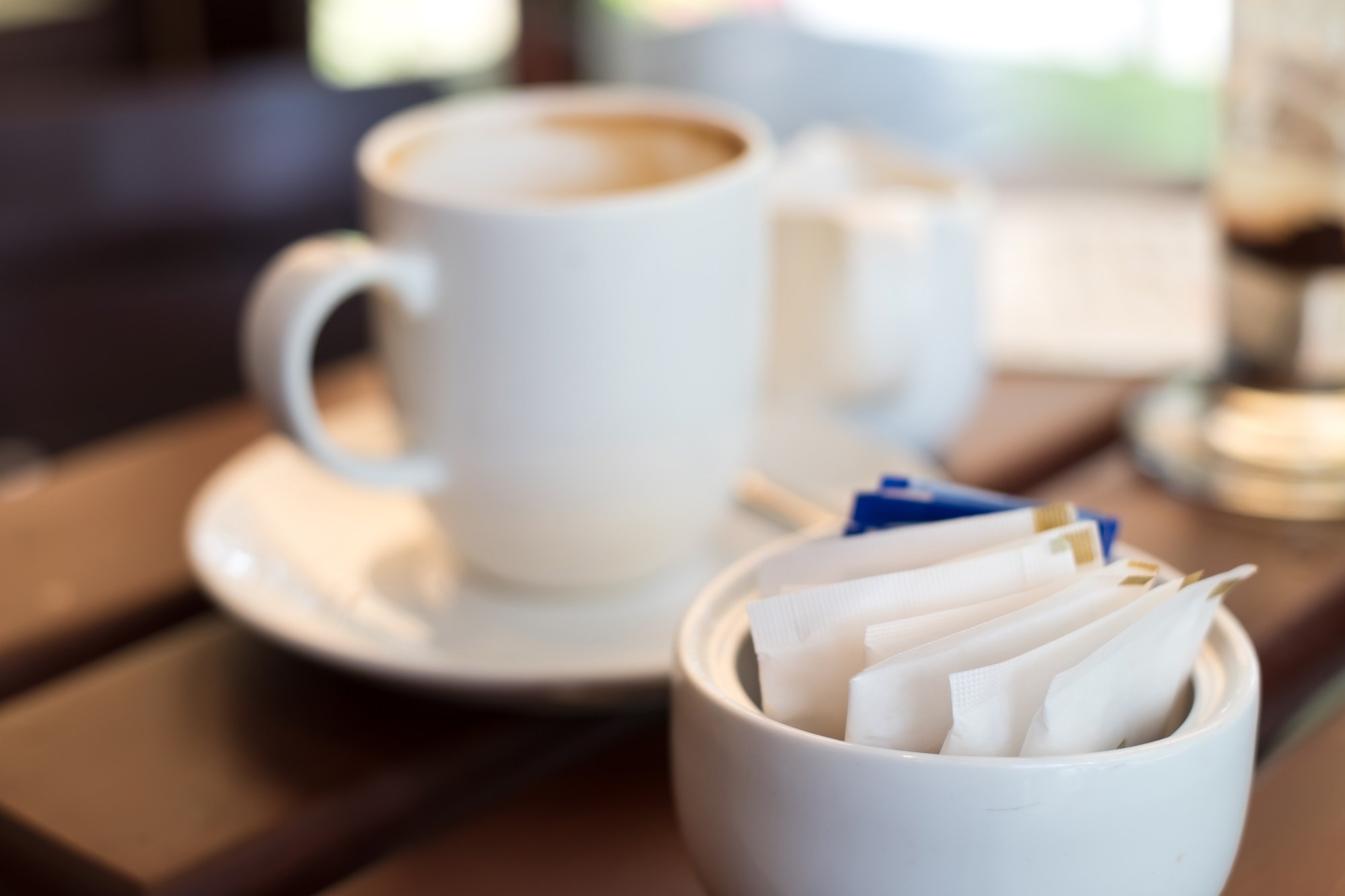In a recent study published in Nutrients, researchers evaluate the short- and long-term effects of sucralose consumption on glucose utilization and blood glucose regulation, respectively, using a murine model.
 Study: Long-Term Consumption of Sucralose Induces Hepatic Insulin Resistance through an Extracellular Signal-Regulated Kinase 1/2-Dependent Pathway. Image Credit: pojvistaimage / Shutterstock.com
Study: Long-Term Consumption of Sucralose Induces Hepatic Insulin Resistance through an Extracellular Signal-Regulated Kinase 1/2-Dependent Pathway. Image Credit: pojvistaimage / Shutterstock.com
Background
Diabetic and obese individuals often rely on sugar replacements for glycemic control and weight management; however, some studies have reported that artificial sweeteners can negatively impact glycemic homeostasis. Furthermore, non-nutritive sweetener use affects the number of metabolites in the blood and alters the intestinal microbial balance, thereby affecting the subsequent glycemic reaction and culminating in glucose intolerance.
Acesulfame potassium (AceK) consumption has been shown to accelerate atherosclerosis, increase lipogenesis in hepatic tissues, and worsen dyslipidemia caused by diets with increased cholesterol and apolipoprotein E content. The frequent use of sugar substitutes like sucralose, AceK, and aspartame has also been linked to an increased risk of cardiovascular illnesses such as coronary artery disease and stroke.
Although sucralose is one of the most widely used sweeteners in food, its impact on insulin sensitivity, and the mechanisms responsible for this effect, remain unclear.
About the study
In the present study, researchers investigate whether sucralose consumption affects glucose utilization and blood glucose regulatory pathways.
To explore the impact of prolonged sucralose intake on glucose homeostasis, C57BL/6 mice were given a single oral dose of sucralose and randomized to receive Chow diet, high-fat diet (HFD), or HFD augmented by sucralose (HFSUC). The human hepatoma HepG2 cell line was also treated with various enzyme blockers to study probable pathways of sucralose-induced resistance to insulin and the consequences of sucralose consumption on glucose homeostatic pathways.
The acceptable daily intake (ADI) of sucralose was adjusted from current recommendations of 5.0 mg/kg daily by the United States Food and Drug Administration (FDA) to those for rodents at 60 mg/kg/day. For two weeks, mice in the HFSUC group received intraperitoneal U0126 injections at a dose of 10 mg/kg daily to assess the function of extracellular signal-regulated protein kinases 1 and 2 (ERK1/2) in insulin resistance induced by sucralose.
After sucralose treatment, blood samples were collected to measure blood glucose levels and an enzyme-linked immunosorbent assays (ELISA) was used to determine blood insulin levels. Both insulin and glucose tolerance tests were also performed. Western blot analysis on HepG2 cell lysates was performed to evaluate protein kinase B (Akt) phosphorylation and mitogen-activated protein kinase (MAPK) expression.
For 30 minutes, cell lines were treated with SP600125, a c-Jun N-terminal kinases 1 and 2 (JNK1/2) inhibitor, U0126, an ERK1/2 inhibitor, STF083010, an inositol-requiring enzyme type 1 (IRE-1) inhibitor, lactisole, a taste receptor type 1 member 3 (T1R3) inhibitor, or gymnemic acid I, a T1R2 inhibitor.
Proteins were extracted from HepG2 cells or hepatic tissues and subjected to radioimmunoprecipitation. Thereafter, protein levels were determined using bicinchoninic acid tests, whereas amino acid compounds were segregated using sulphate-polyacrylamide gel electrophoresis (SDS-PAGE).
Increased insulin resistance after long-term sucralose use
The oral sucralose bolus stimulated insulin production, thereby lowering blood glucose levels in mice. Comparatively, long-term sucralose supplementation increased HFD-induced resistance to insulin and tolerance to glucose without affecting body weight or food intake.
ERK-1/2 inhibitor administration reversed the impact of sucralose on insulin resistance and glucose intolerance in mice, as evidenced by the area under the curve (AUC) for glucose utilization among HFSUC mice following sucralose administration. Hepatic insulin signals were examined to confirm the improved HFD-induced resistance to insulin among HFSUC mice, which revealed reduced phosphorylated Akt levels among HFD mice as compared to mice on the Chow diet.
Insulin signalling was disrupted and glucose utilization by peripheral organs or cells in the liver was affected. Sucralose supplementation significantly reduced phosphorylated Akt levels among HFD mice, thus demonstrating that sucralose consumption could worsen HFD-induced resistance to insulin, ultimately leading to poor glucose homeostasis.
Sucralose reduced insulin signalling through an ERK1/2-based mechanism. To this end, sucralose administration inhibited insulin-induced phosphorylation of Akt and enhanced MAPK phosphorylation, especially JNK1/2 and ERK1/2, in HepG2 cells within 60 and five minutes, respectively.
Sucralose-induced resistance to insulin in HepG2 cells was reduced by blocking T1R3 with lactisole or pre-treatment with endoplasmic reticulum stress inhibitors. U0126 pre-treatment also reduced the effect of sucralose on the phosphorylation of Akt.
Among HFD-fed mice, ERK1/2 activity was higher than in Chow diet-fed animals. Further, sucralose supplementation enhanced the impact of high-fat diets on ERK1/2 phosphorylation.
The AUC findings after U0126 administration confirmed that U0126 administration alleviated the intolerance to glucose during the oral glucose tolerance test among HFSUC mice. U0126 treatment also reduced decreased sugar levels among HFSUC mice during the insulin tolerance test.
Overall, the current study found that sucralose increased HFD-induced resistance to insulin in mice and disrupted insulin signalling in the liver through an ERK1/2- T1R3-dependent pathway.
Journal reference:
- Tsai, M., Li, C., Wu, H., et al. (2023). Long-Term Consumption of Sucralose Induces Hepatic Insulin Resistance through an Extracellular Signal-Regulated Kinase 1/2-Dependent Pathway. Nutrients 15(2814). doi:10.3390/nu15122814